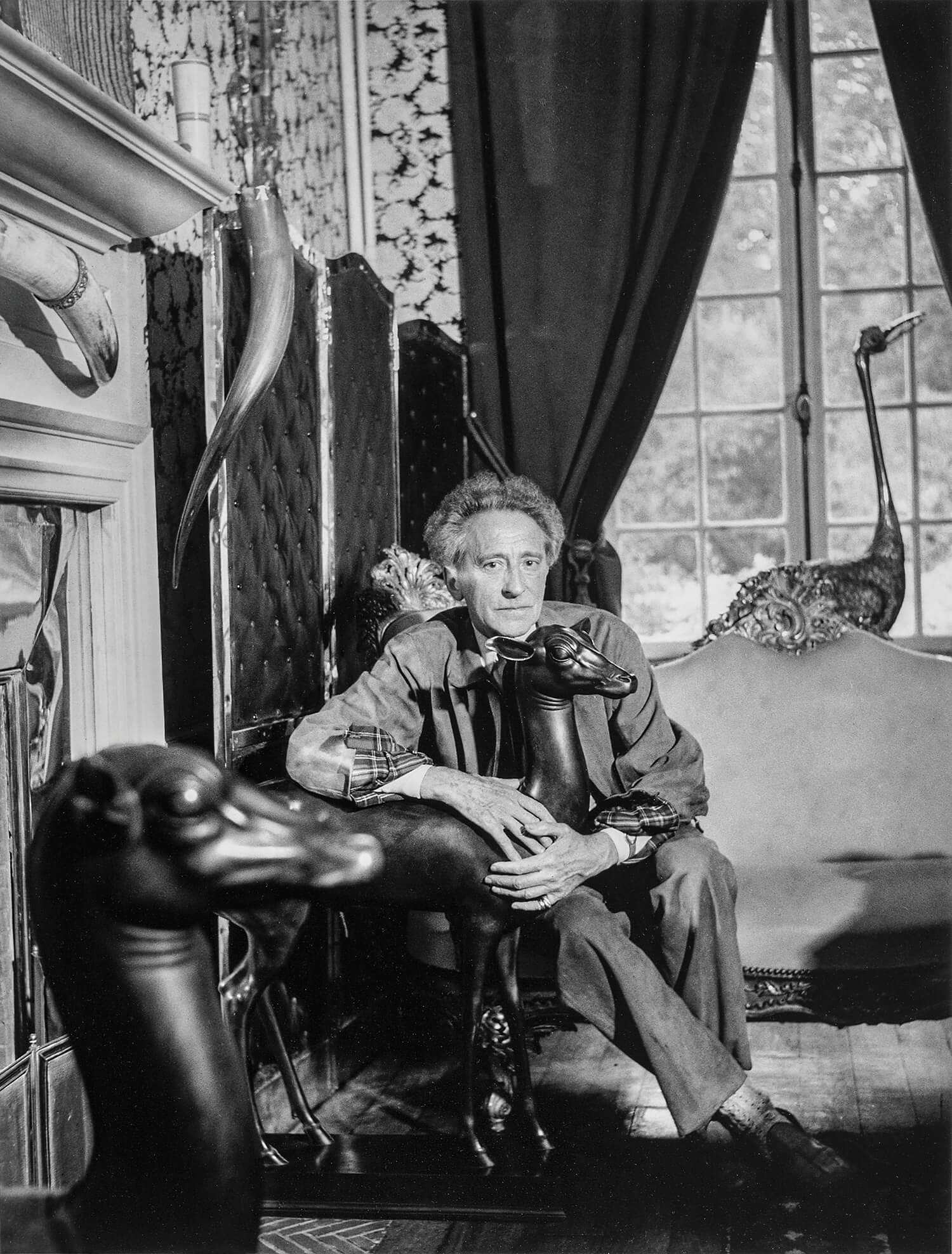Jean Cocteau (Maisons-Laffitte 1889 – Milly-la-Forêt 1963)
A young age
Jean Cocteau was born in Maisons-Laffitte on 5 July 1889.
Born into an upper middle-class Parisian family, Jean Cocteau studied at the Lycée Condorcet in Paris. He was nine years old when his father committed suicide.
He published his first poems in 1909 and became a fashionable figure in Paris and the salons frequented by the Countess de Noailles and Marcel Proust. In 1913, Diaghilev’s premiere of Stravinsky’s ‘The Rite of Spring‘ was a revelation for him, one that was to influence the whole of his protean oeuvre.
Enlisted as an ambulance driver during the First World War, he befriended Apollinaire. It was this experience that inspired the novel Thomas l’Imposteur (1923).
Between the wars
Jean Cocteau, at the height of his fame, experienced a period of intense creativity, marked by the ‘avant-garde’. He collaborated with musicians such as Érik Satie (Parade, 1917) and Darius Milhaud, as well as with famous painters, first and foremost Picasso.
He was equally curious in his writing, experimenting with Futurist, Dadaist and Cubist-inspired poetry: Le Cap de Bonne Espérance (1919), and the poetic novel: Le Potomac (1919), Les Enfants terribles (1929).
From theatre to cinema
He also played an important role in the theatre, with Les Mariés de la tour Eiffel (1924), La Voix humaine (1930), La Machine infernale (1934), Les Parents terribles (1938), Les Monstres sacrés (1940), La Machine à écrire (1941), L’Aigle à deux têtes (1946), Bacchus (1952).
Jean Cocteau was also invested in the cinema and created some outstanding films and screenplays, including Le Sang d’un poète (1930), L’Éternel retour (1943), La Belle et la Bête (1945), Les Parents terribles (1949), Orphée (1950) and Le Testament d’Orphée (1960).
« Étonne-moi »
To the varied range of his talents should be added that of draughtsman and painter. In addition to his albums, he decorated chapels in Villefranche-sur-Mer and Milly-la-Forêt.
A genial jack-of-all-trades, a master of the art of enchantment, this creator whose originality prevented him from being pigeon-holed into any specific literary or artistic movement devoted himself to a single master: astonishment – his own as well as that of others. In 1912, Diaghilev challenged him to “astonish him“, a challenge he took literally. Jean Cocteau was elected to the Académie française on 3 March 1955.
He died in Milly-la-Forêt on 11 October 1963, and is buried in the chapel of Saint-Blaise-des-Simples, which he decorated. www.chapelle-saint-blaise.org
According to www.academie-francaise.fr

